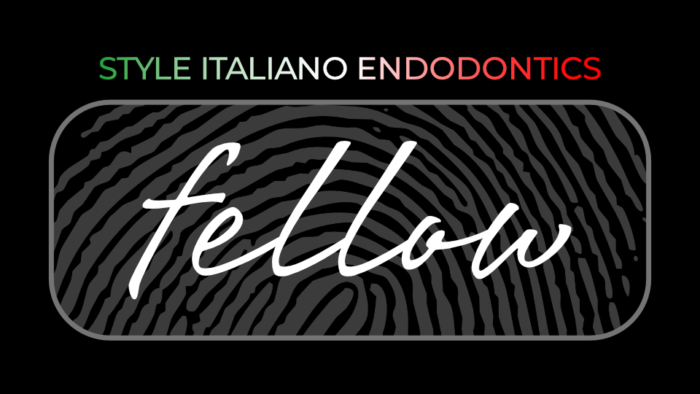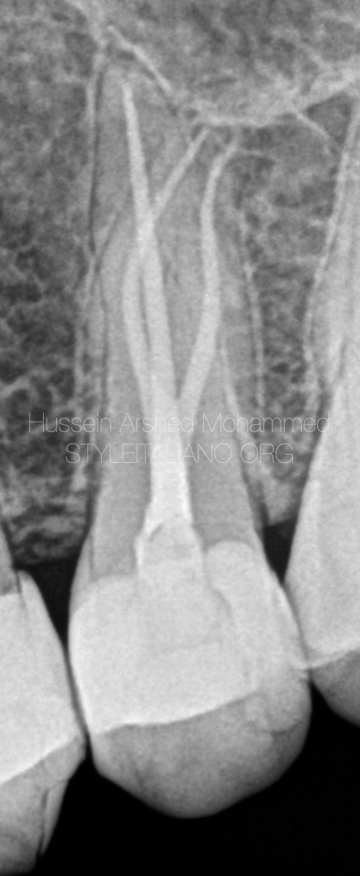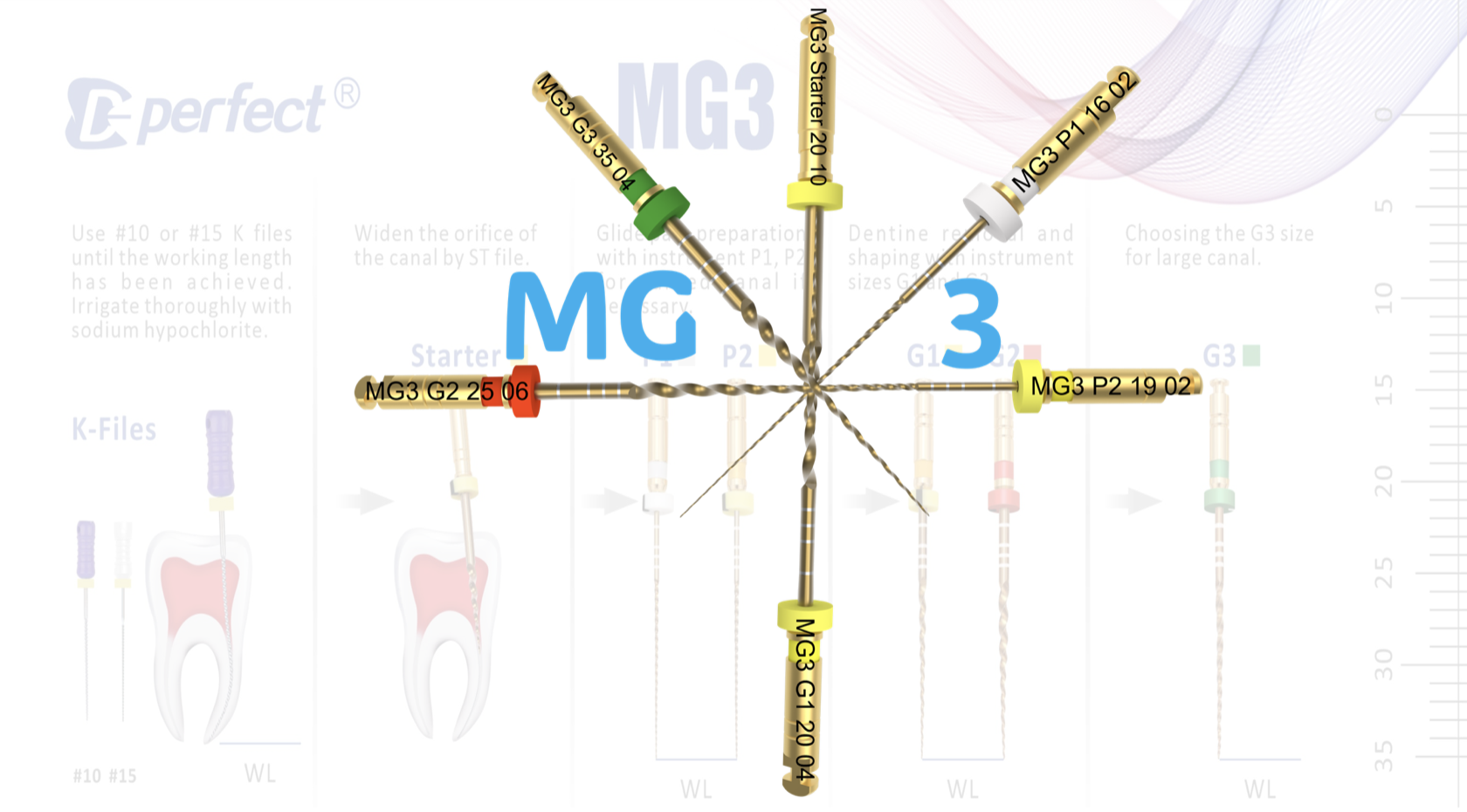
Dealing with severely curved canals in lower molar
02/11/2025
Fellow
Warning: Undefined variable $post in /var/www/vhosts/styleitaliano-endodontics.org/endodontics.styleitaliano.org/wp-content/plugins/oxygen/component-framework/components/classes/code-block.class.php(133) : eval()'d code on line 2
Warning: Attempt to read property "ID" on null in /var/www/vhosts/styleitaliano-endodontics.org/endodontics.styleitaliano.org/wp-content/plugins/oxygen/component-framework/components/classes/code-block.class.php(133) : eval()'d code on line 2
Managing severely curved canals in endodontics requires careful planning and technique to prevent complications such as ledging, transportation, or instrument separation. Preoperative radiographs and CBCT imaging help assess curvature severity. Glide path creation is crucial, often using small, flexible hand files (e.g., #08 or #10 K-files) with a watch-winding motion. Nickel-titanium rotary or reciprocating instruments with enhanced flexibility, such as heat-treated files, are preferred for shaping. Frequent irrigation with sodium hypochlorite and activation of irrigation aid in smooth instrumentation. Passive step-back or crown-down techniques help reduce stress on files. Gentle, controlled movements and regular recapitulation minimize procedural errors. In cases of extreme curvature, hybrid approaches combining hand and rotary instrumentation may be employed starting with cronal flaring. Ultimately, successful management of curved canals relies on patience, tactile control, and adherence to established protocols.

Fig. 1
In difficult cases CBCT plays a crucial role in assessing the complexity and anatomy of severely curved canals, providing detailed 3D imaging that aids in accurate treatment planning and improving navigational precision during instrumentation.
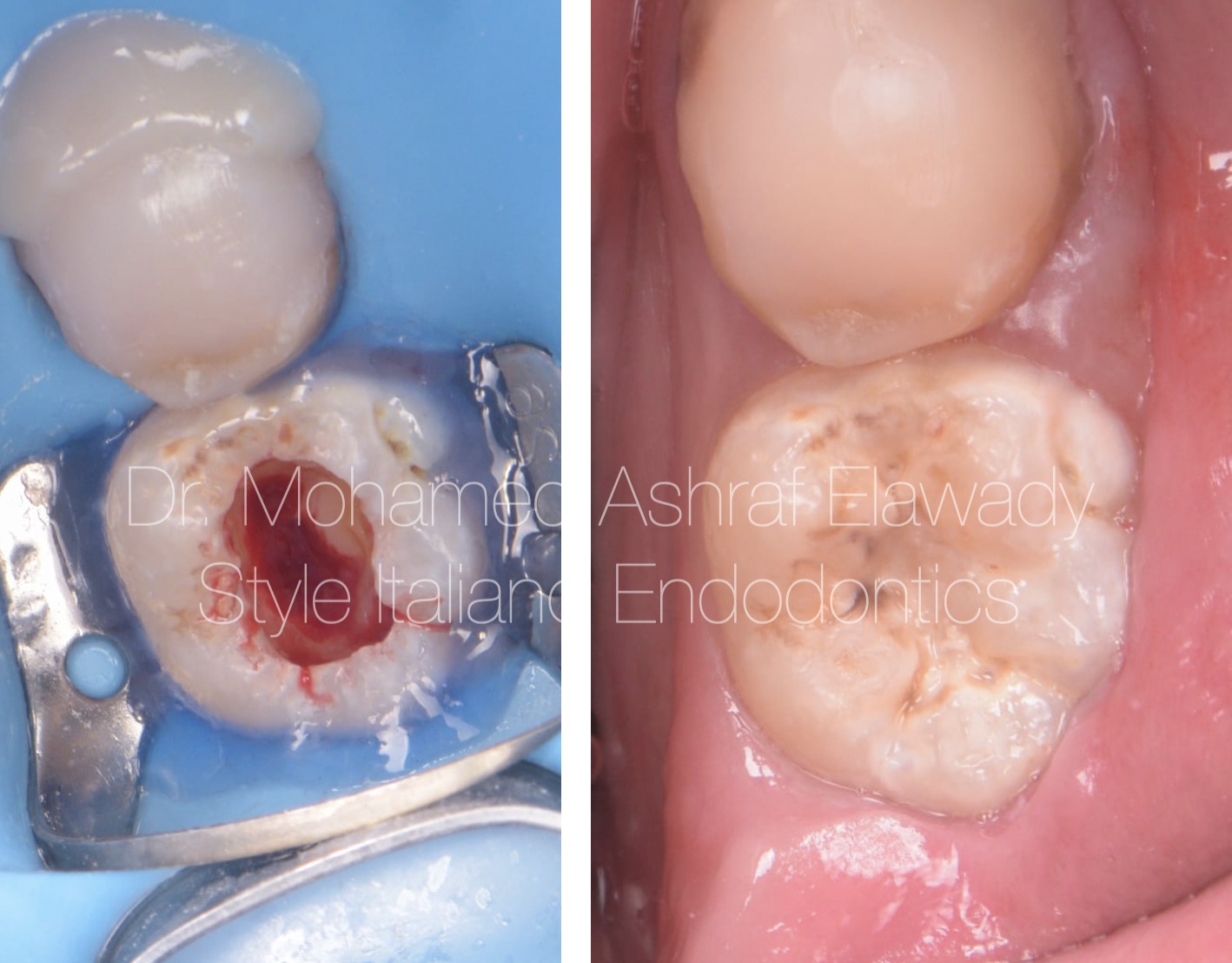
Fig. 2
Starting with isolation prevents contamination, enhances visibility, and ensures a dry, clean environment for effective root canal treatment.

Fig. 3
Glide path creation in severely curved canals ensures smooth instrument navigation, reduces the risk of ledging, and facilitates safe shaping.

Fig. 4
Shaping severely curved canals using rotary files in OTR mode and reciprocating mode combines the benefits of both techniques for optimal control. OTR mode, with its gentle oscillating motion, helps minimize stress on the instrument, reducing the risk of file fracture or canal transportation. It’s ideal for negotiating tight curves, as the oscillation allows the file to glide through the canal with less force. Reciprocating mode, on the other hand, uses back-and-forth motion to effectively remove debris while maintaining flexibility and reduce stresses on the file during shaping .this combination ensures safe, efficient shaping of curved canals, with reduced risk of procedural complications, while enhancing overall canal preparation.
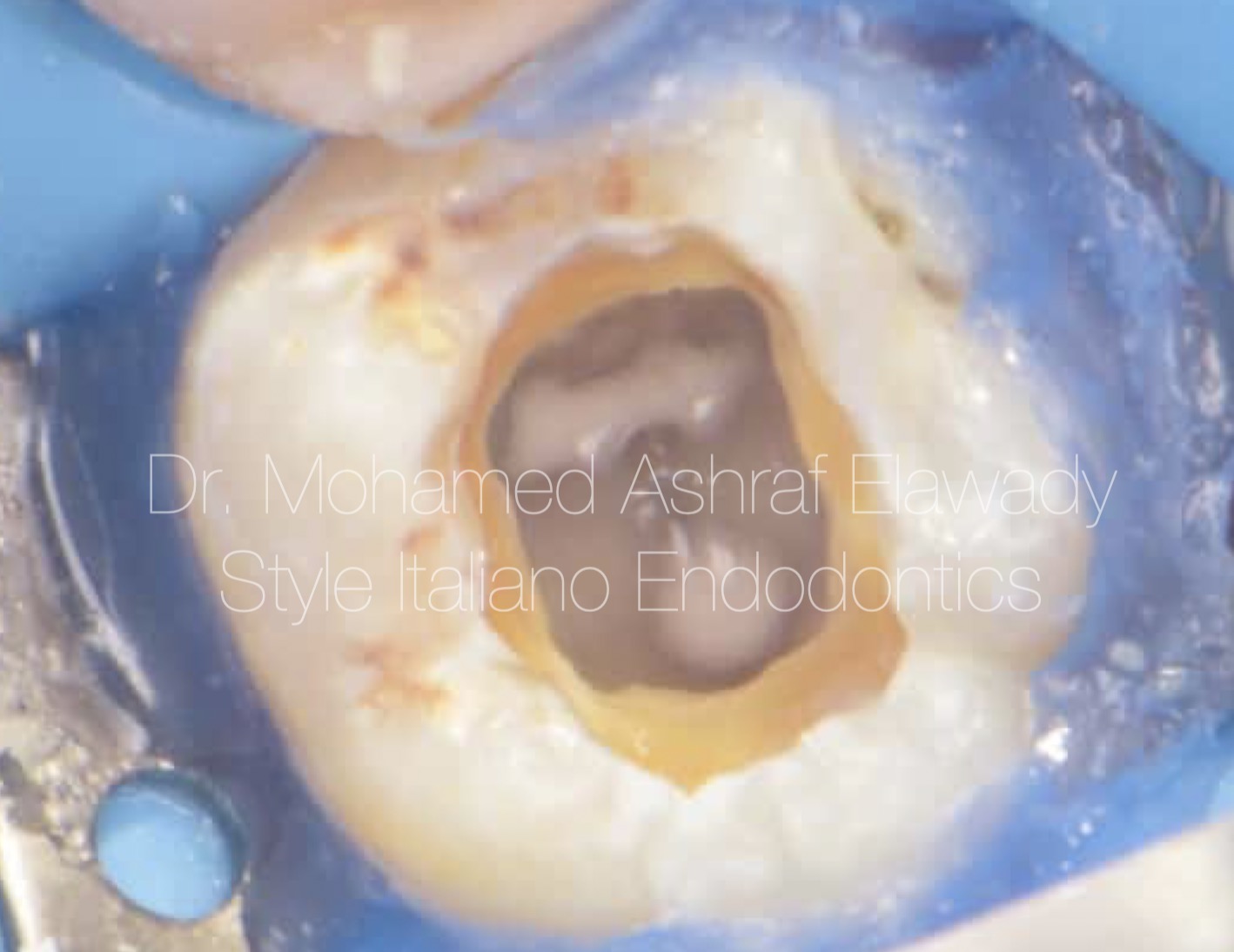
Fig. 5
In severely curved canals, effective irrigation is crucial for removing debris and disinfecting the system. Activation techniques, like ultrasonic or sonic , enhance fluid penetration into complex anatomies. Using agitation methods ensures thorough cleaning, reaching inaccessible areas.
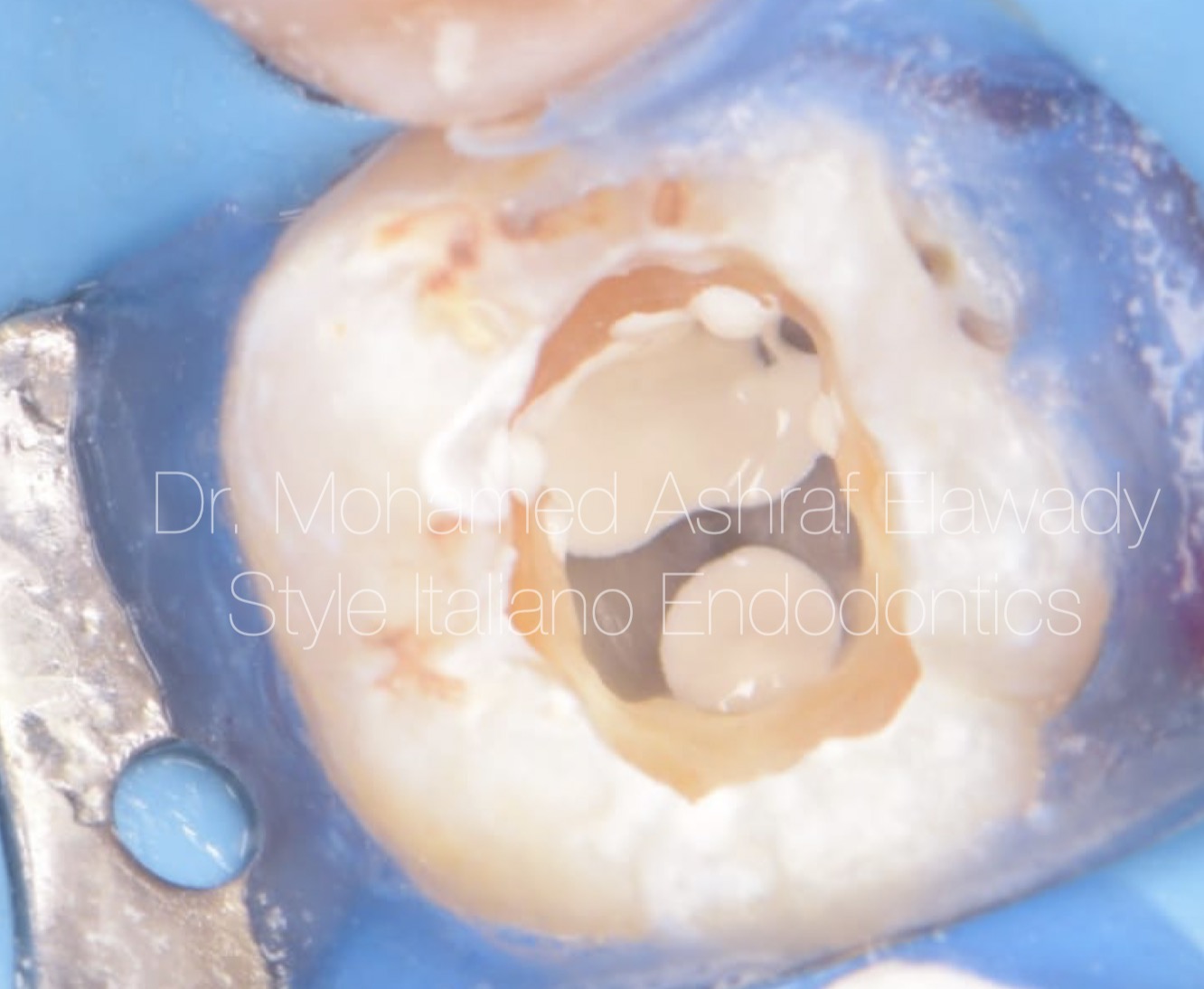
Fig. 6
Bioceramic sealers play a vital role in obturation by providing excellent sealing properties, biocompatibility, and resistance to shrinkage. Their hydraulic properties allow them to adapt well to canal irregularities, offering superior resistance to bacterial penetration. These sealers promote tissue healing, enhancing long-term outcomes in root canal treatments.

Fig. 7
Obturation with modified cwc and bioceramic sealer.
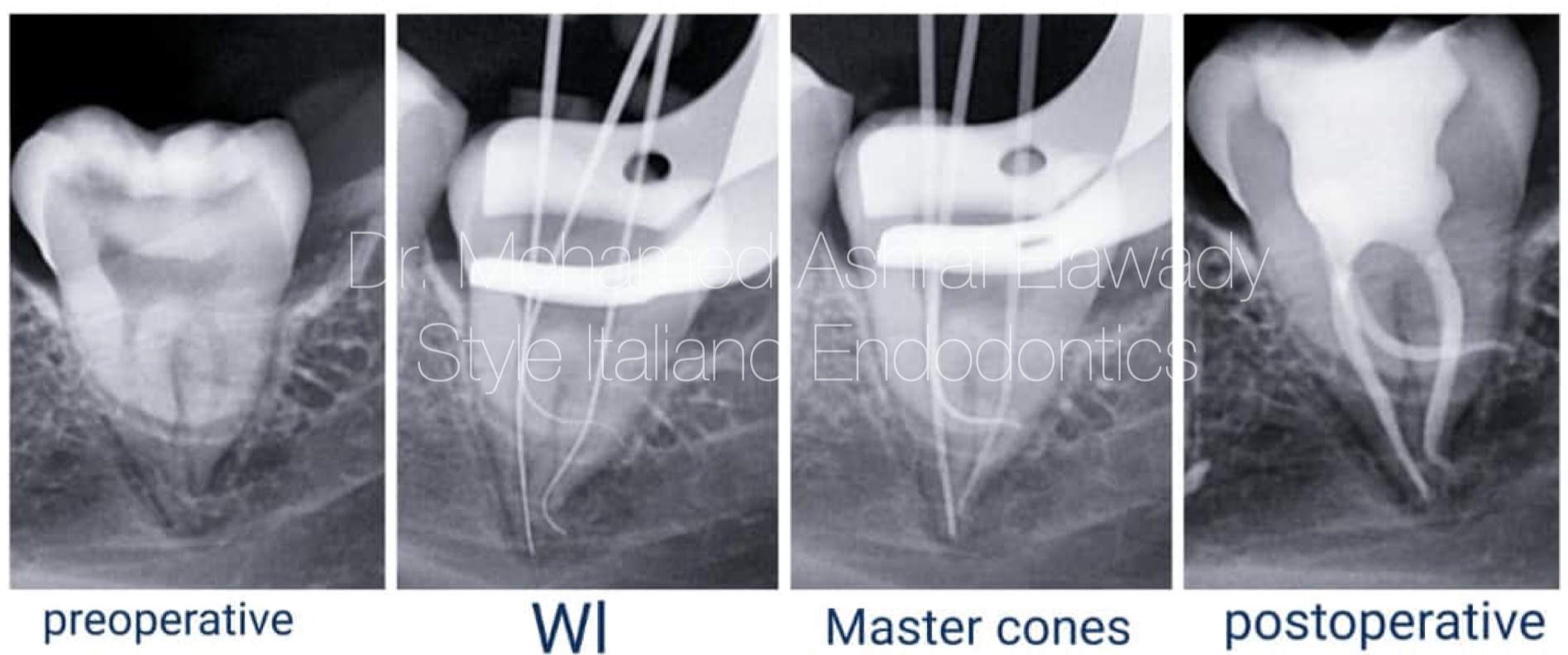
Fig. 8
Panoramic view of the clinical case

Fig. 9
MOHAMED ASHRAF ELAWADY
Speaker of endodontics.
Cofounder of care dental clinic, Egypt.
Endodontic consultant in multiple private clinics.
Microscopic endodontist 2019.
Conclusions
The management of severely curved canals in lower molars requires a comprehensive, multifaceted approach to ensure successful treatment outcomes, involves a blend of skill, precision, and technology. By applying evidence-based techniques and modern instruments, clinicians can navigate complex anatomies safely, reduce complications, and achieve predictable, long-term success in endodontic treatment.
Bibliography
1_Balani p, Niazi , Rashid H. A brief review of the methods used to determine the curvature of root canals. J restor dent. 2015;3(4):57.
2_Peters OA. current challenges and concepts in the preparation of root canal systems: A review. J Endod. 2004;30(8):559-67.
3_Lain N, Tushar S. Curvedcanals: ancestral files revisited. Indian J Dent Res. 2008;19(3):267-71.
4_Mcspadden J. Masteiing endodontic instrumentation. canada: cloudland Institute; 2007.
5_Ansari I. Maria R. Managing curved canals. Contemp clin dent 2012;3(2):237-41.

